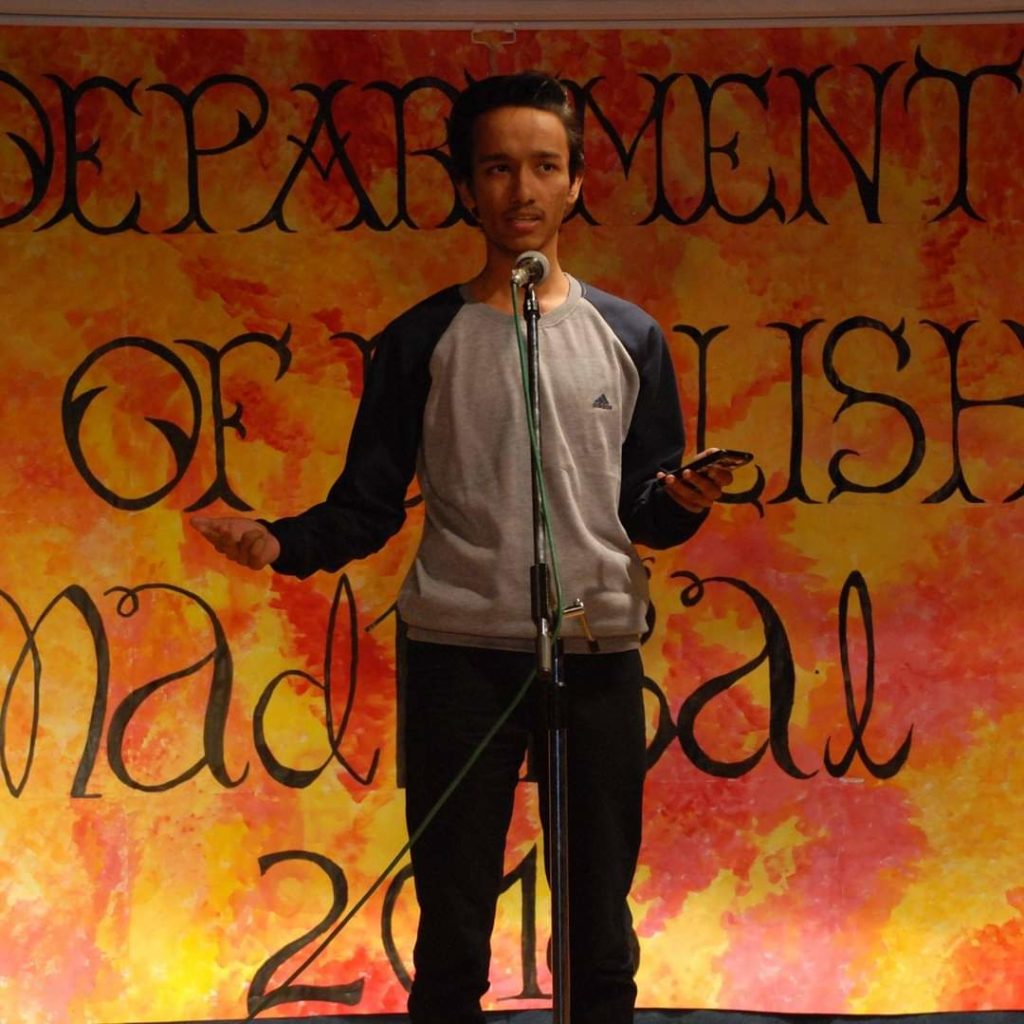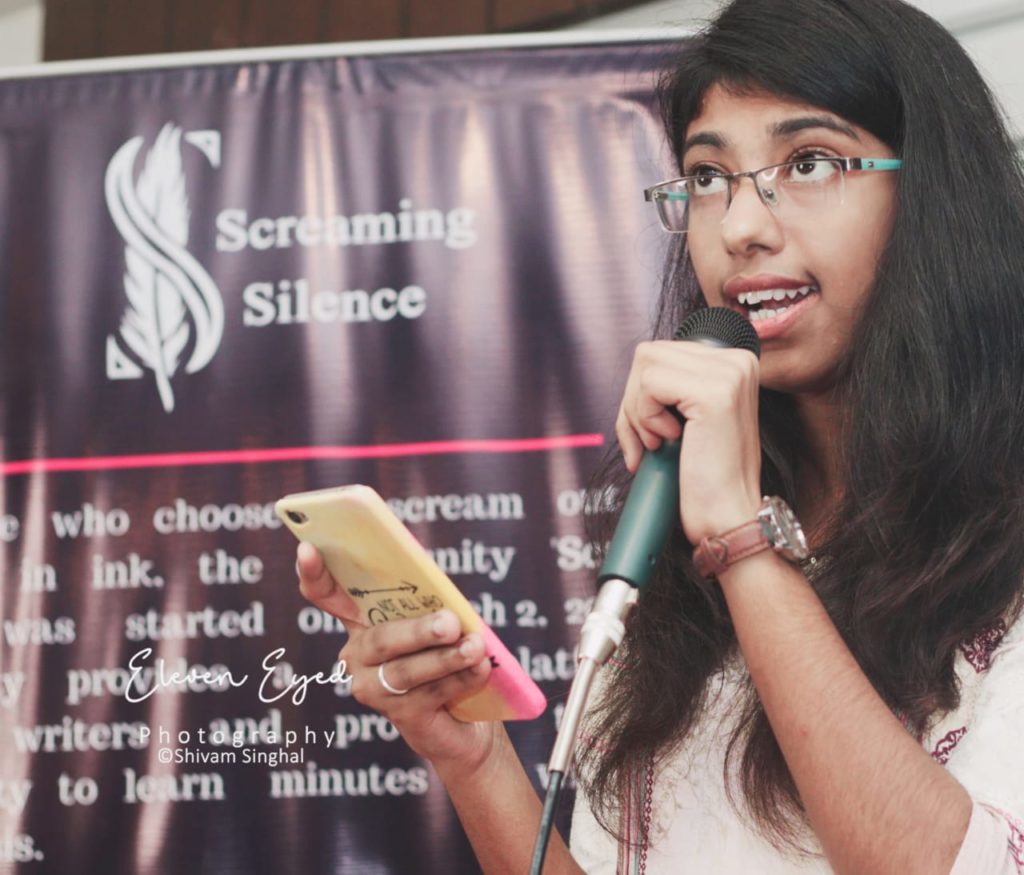Slam poetry culture in India

Slam poetry has been a sensation among the millennials in the last five years (Photo: Umanath Chhetri)
Slam poetry culture has become popular over the last few years. Performer-audience interactions, lack of age restrictions and creative liberty it provides, makes slam poetry a hit among new generation artistes.
“Slam poetry provides the kind of freedom of expression that written poetry doesn’t. Slam poetry is unique in the sense that it depends equally on written words as well as on the performance of the poetry. Slam poetry is a performing art. Unlike traditional poetry, slam poetry is easier to decipher. Usage of simple words and metaphors make it easy to understand and relate, and that is exactly the motive of slam poetries,” says Umanath Chhetri, 22, a spoken word artiste who hails from Darjeeling, West Bengal and has been performing in New Delhi for three years.
Over the past decade or so, slam poetry has become popular in India mainly due to the telecom boom and the sharp increase in the number of smartphones in the country and the resultant boom in consumption of digital content on these telephones. Soon enough the demand for slam poetry expanded beyond the digital universe and popular slam poetry artistes began performing at cafes, literary events and open mic competitions. Though still confined to metro cities mainly, slam poetry has been a sensation among the millennials in the last five years.
“I started getting calls from cafes and literary event organisers in the town since 2016, asking me to perform at their events. It was the first time I felt recognised and appreciated for my poetry and performances. I had been waiting for this recognition for last five years,” says AakarshAanand, 24, a slam poetry artiste based in Patna, capital of the eastern state of Bihar.
“The payment for each show and overall demand is still not good in comparison to cities like New Delhi or Mumbai but it is gradually catching up in Patna too,” Aanand adds.
Process of evaluating slam poetry also adds to its uniqueness. There is no special panel of judges. Slam poetry performances are usually evaluated by a certain number of members from the audience, chosen randomly. Members are asked to assign marks to the performer. The total marks received are added in order to calculate final marks of a performer. Likewise, all performers are marked by audience members and a winner is chosen.

Artistes have been vocal about their traumas because it is cathartic and liberating in nature (Photo: Tanisha Saxena)
“Few organisers come up with their own panel of judges for evaluation but the standard process is to leave it to the audience. Random selection of people from the audience makes the evaluation process of slam poetries fairer than any other way to judge performance. A dedicated panel of judges could increase the chances of biases. The primary goal of slam poetry performance is to make sure that the audience connects with the performer and enjoys. Hence, I think the audience is the best judge for whether a performer could connect with them or not,” says Tanisha Saxena, 21, a Delhi based freelance writer and slam poetry artiste.
Slam poetry competitions break the barriers of traditional competitions. There is no age limit for participation and the traditional barrier that exists between audience and performers is minimal in slam poetry.
“I have seen teenagers, young adults and even people aged 60-70 perform on the same stage and at the same event. An artiste isn’t judged on the basis of age but only on the basis of talent. This arrangement makes it possible even for senior citizens to follow their passion, by providing them with an equal opportunity and stage. As the audience evaluates the performances, there is no stage fright in most of the new aspirants who wish to perform,” explains Saxena.
The art form has no specific rules to follow and can be moulded according to the poet’s style. The platform gives the poets the freedom to express their takes or opinions on the political scenario around them. Today, it has fanned out to their personal experiences, funny anecdotes, and even history with violence and abuse.
“Artistes are free to recite their poems in free verse format, a story format, with music in the background or even on the beats of popular songs. One can choose and develop their own style. When the audience nods along and snaps their fingers, it provides a sense of validation to the performer. It makes one think that they are not isolated in their experiences. The audience relates and shares their experiences too,” says Chhetri.
“Artistes have been vocal about their traumas because it is cathartic and liberating in nature. A feeling of liberty is also reinforced from the feedback of the audience that we face in an event. Almost everywhere I’ve performed, the audience has been very accepting, responsive and understanding,” Chhetri sums up.









